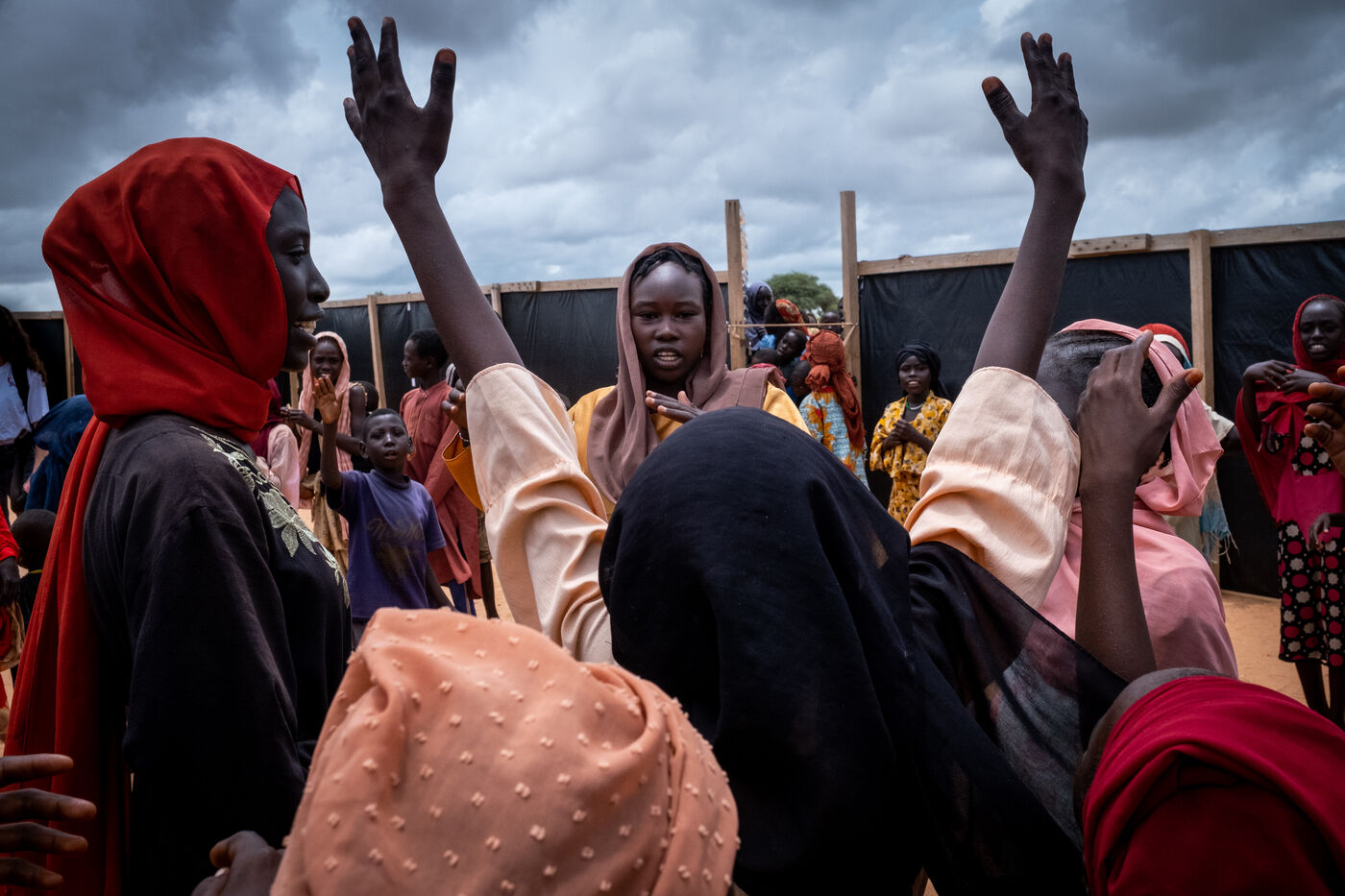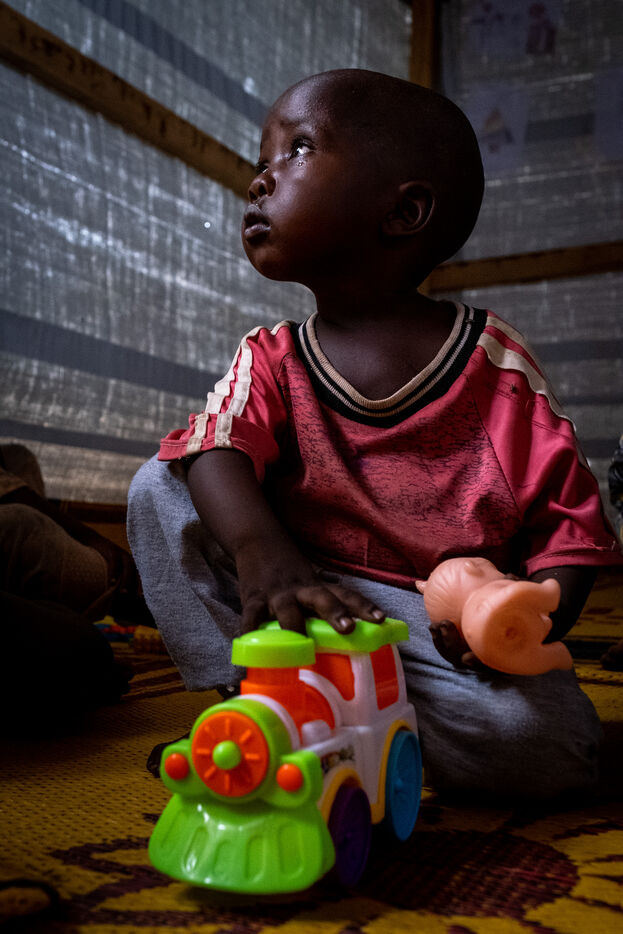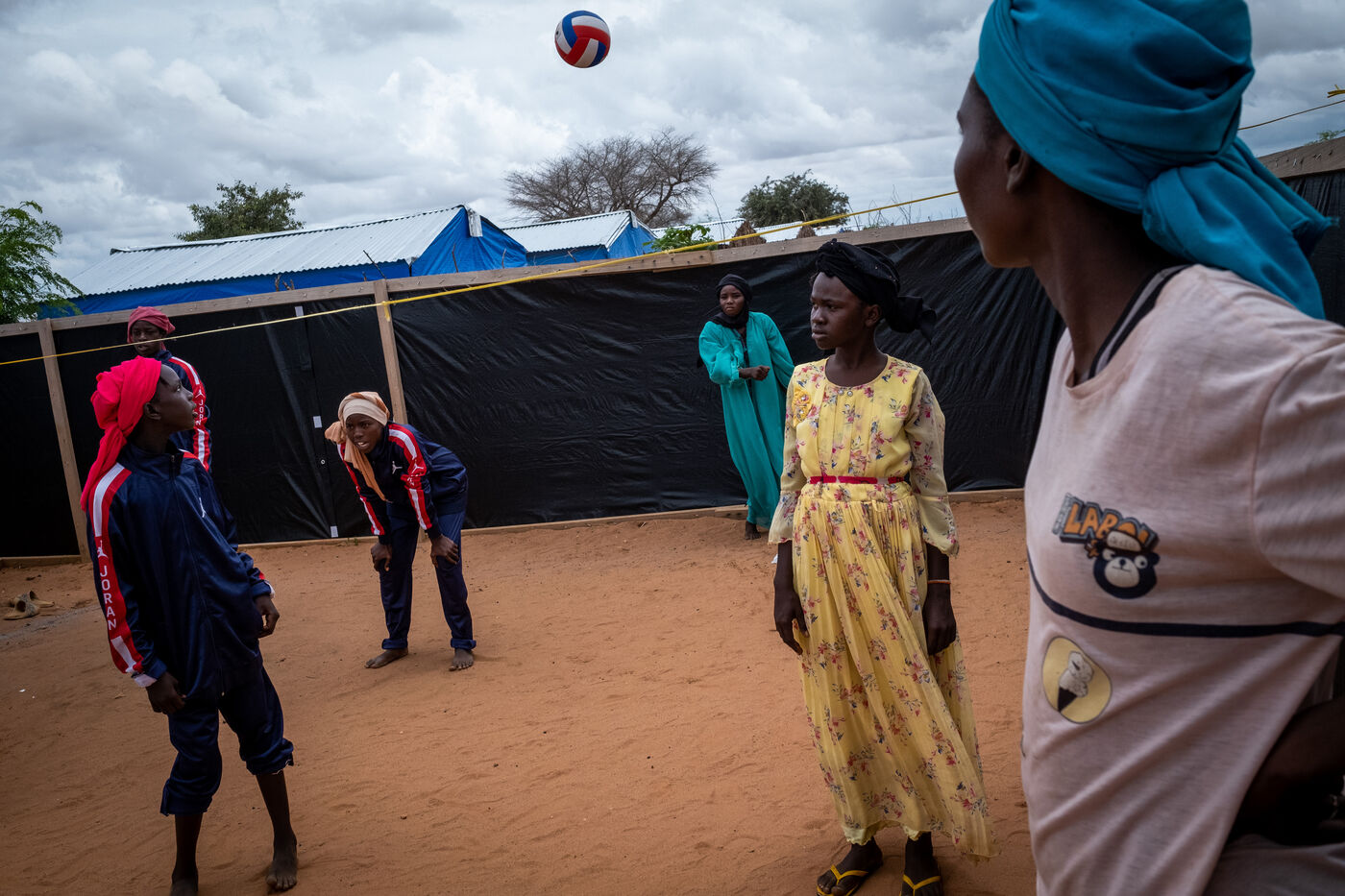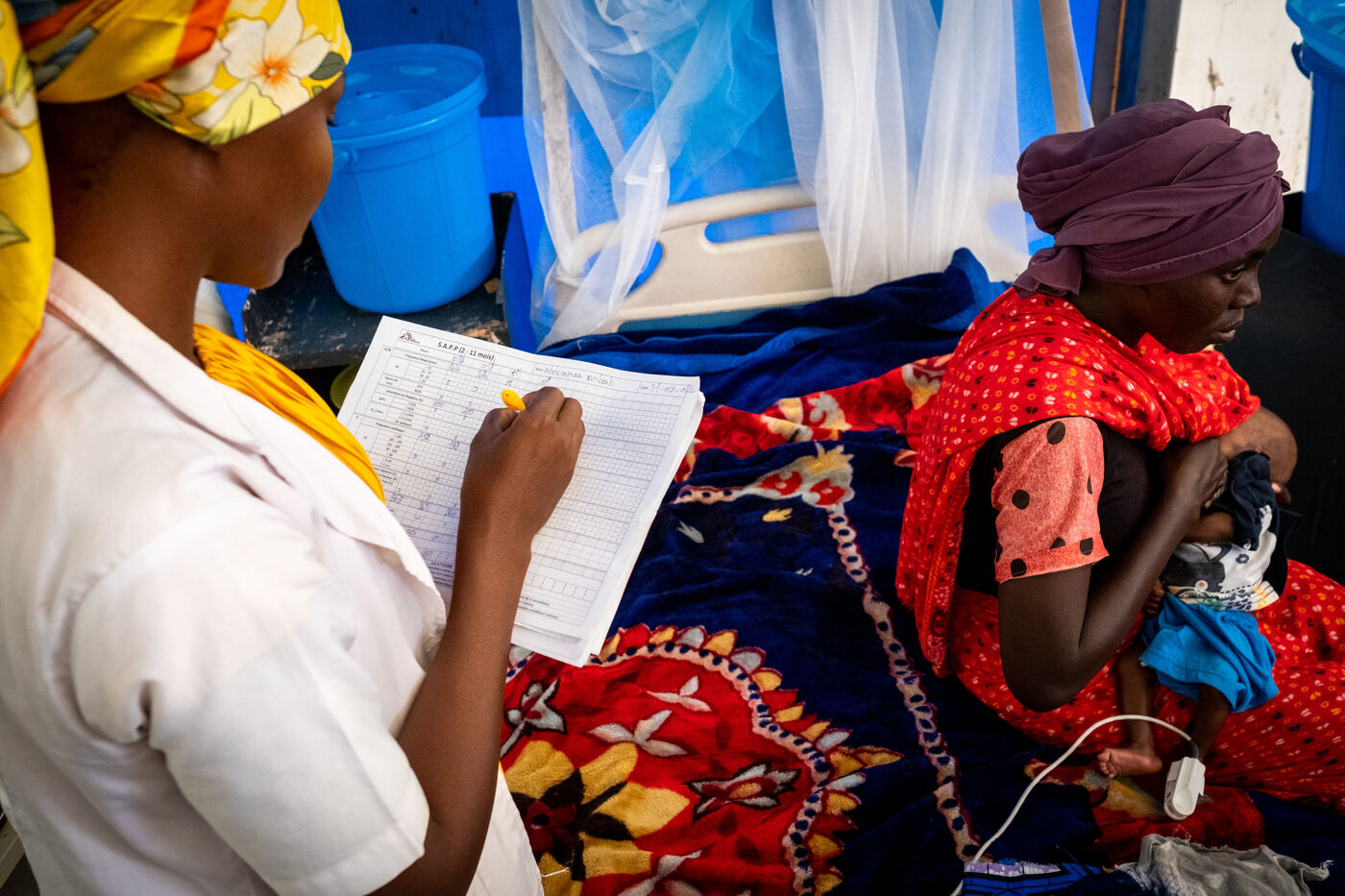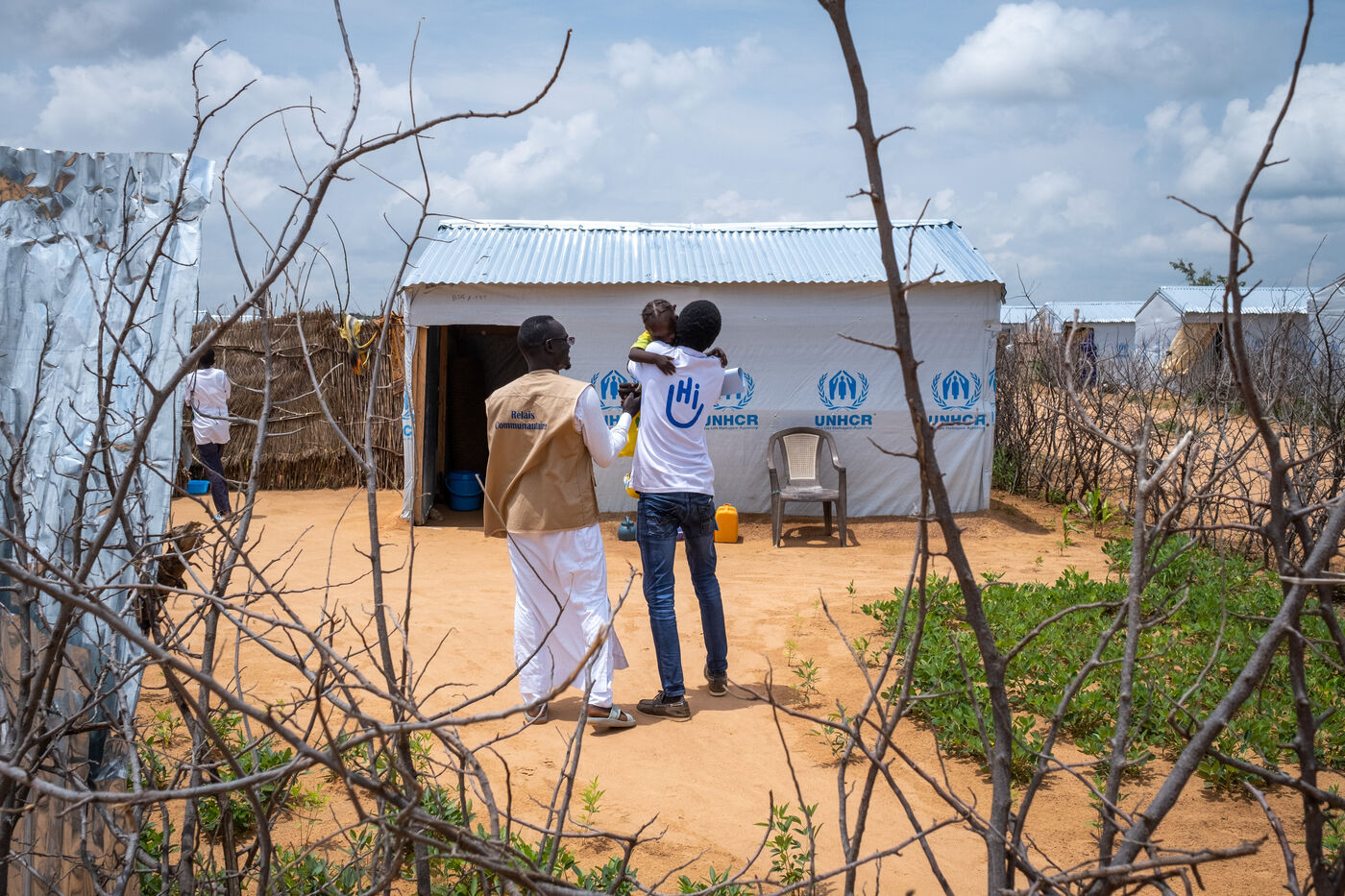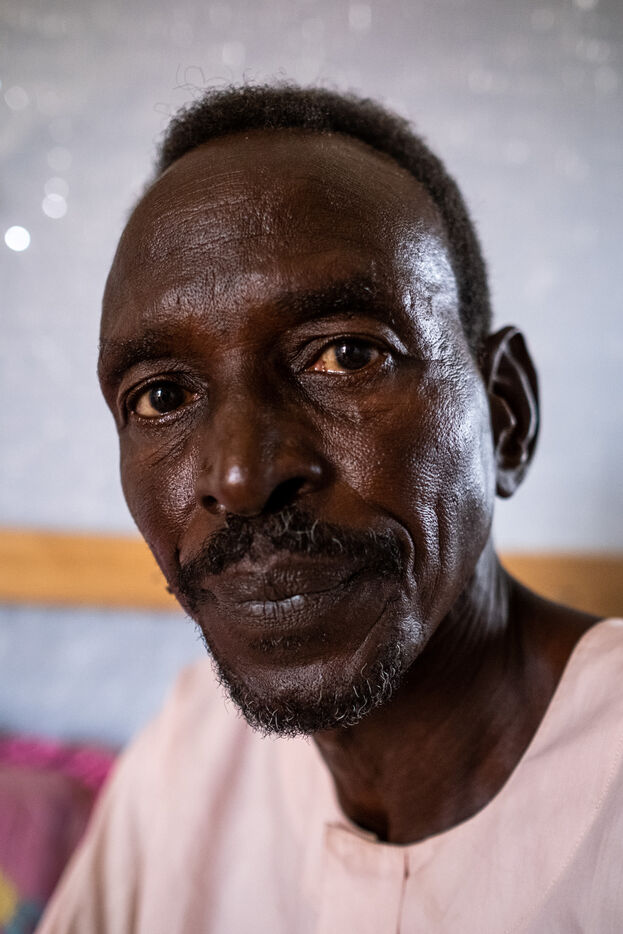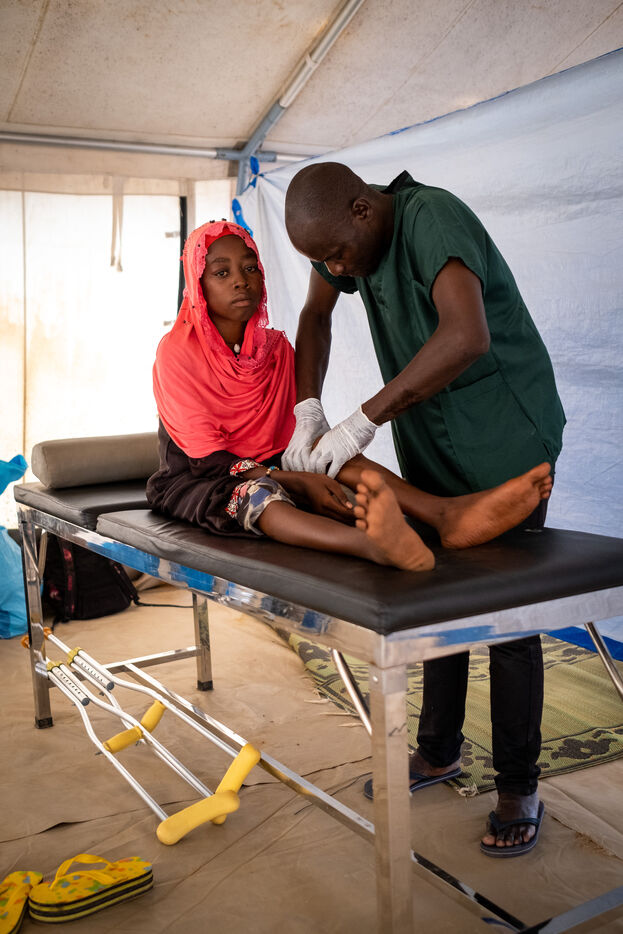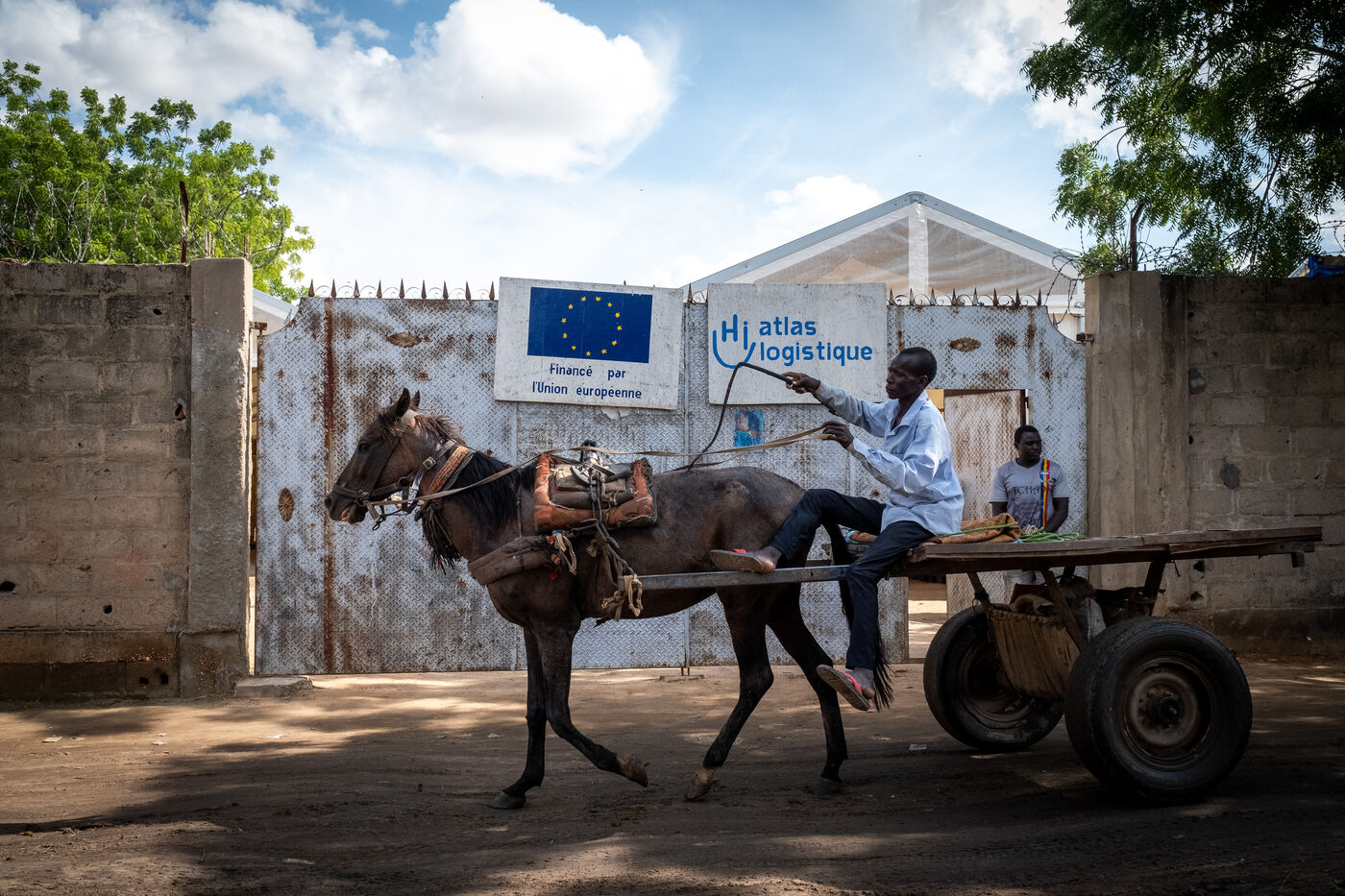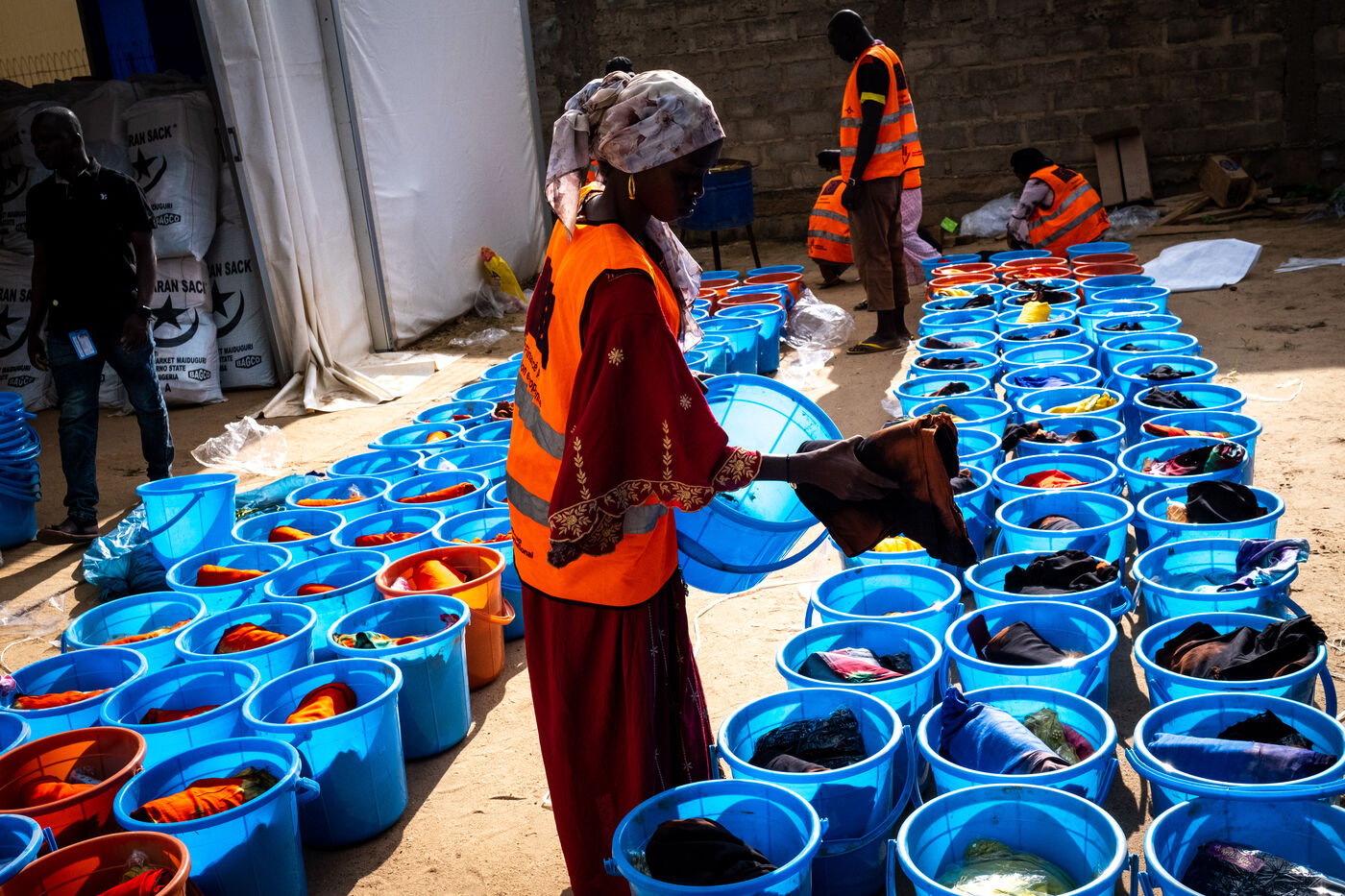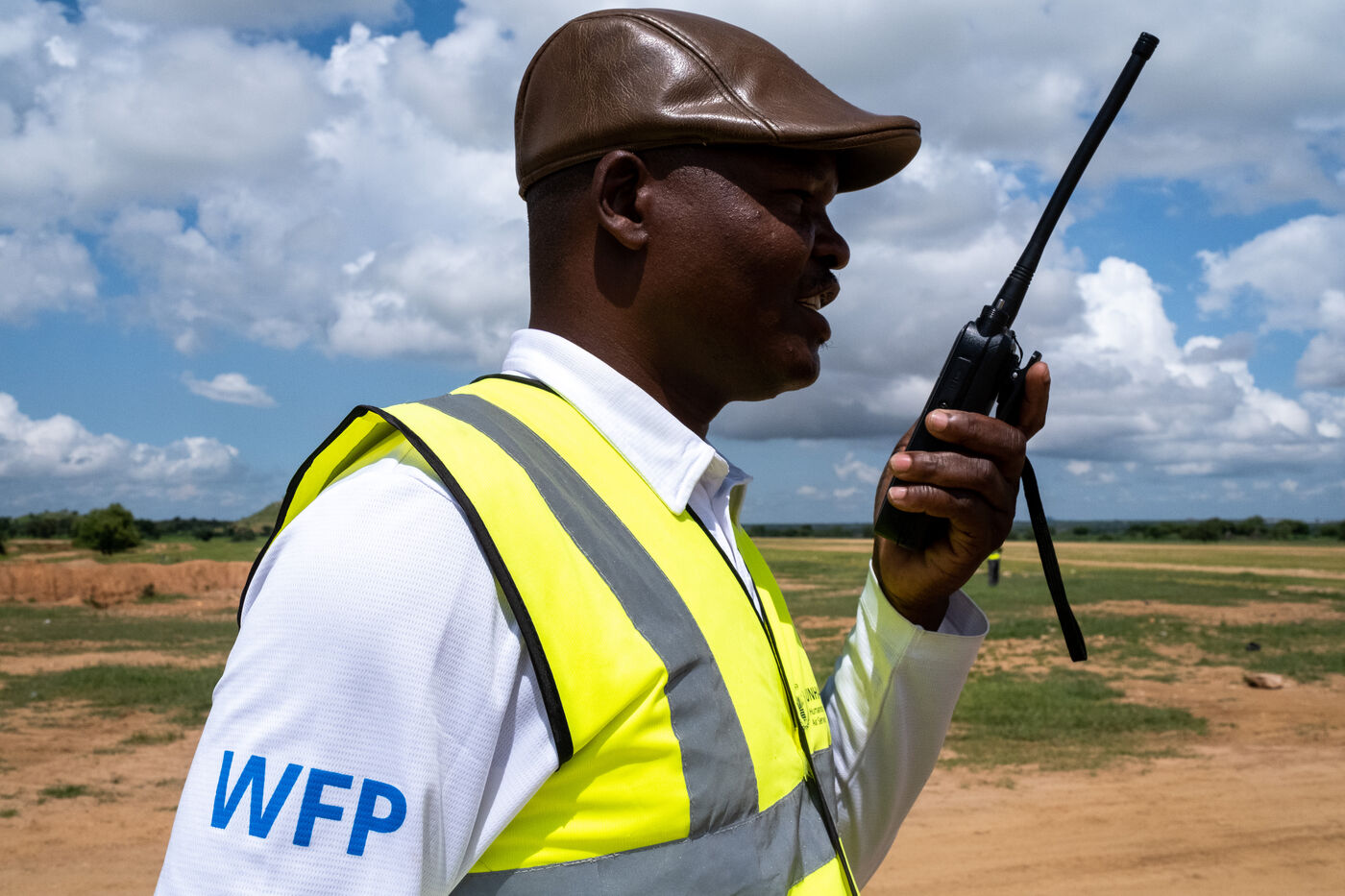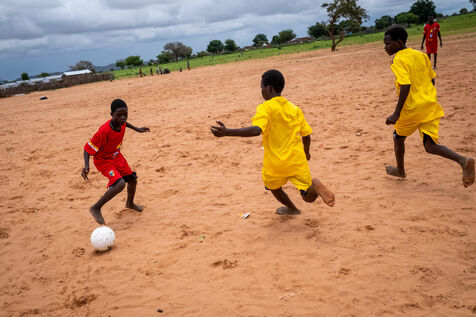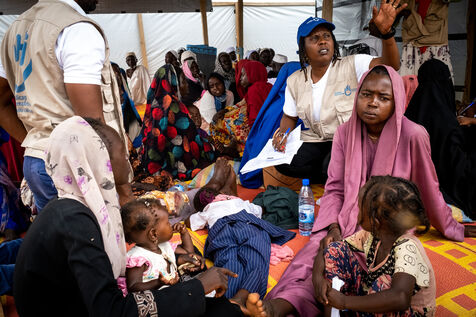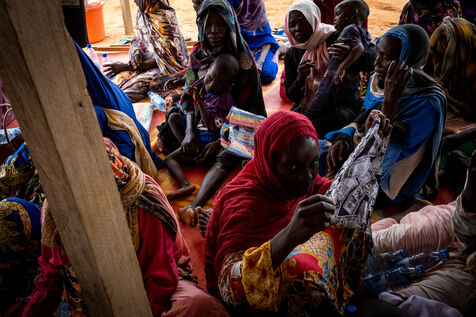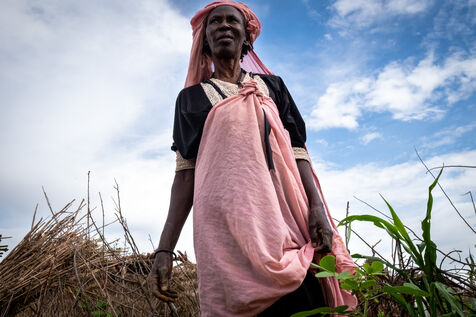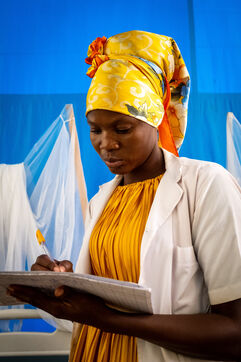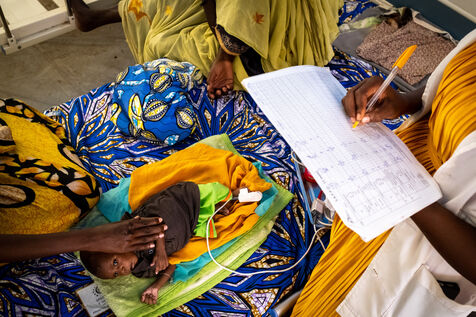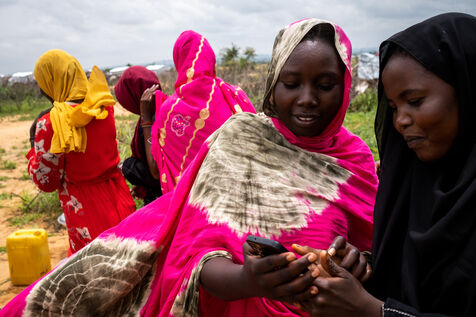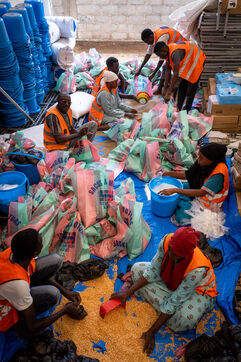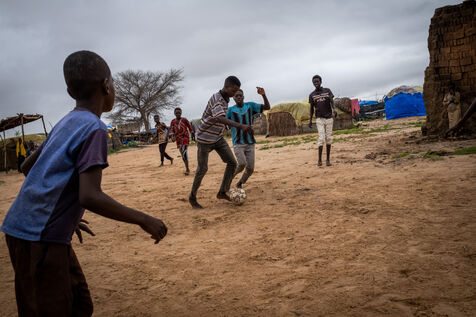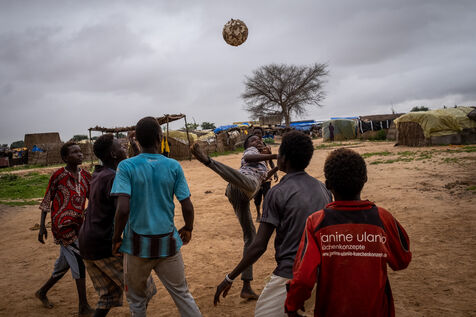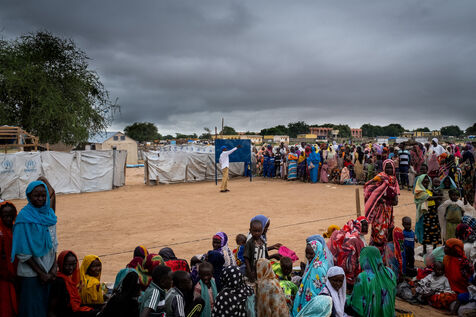Fleeing war to heal
Already weakened by repeated crises, Sudan has been experiencing a civil war with disastrous human consequences since April 2023. A large number of victims are still difficult to estimate, and massive destruction is having a lasting effect on the country's infrastructure. The armed conflict has caused the displacement of nearly 8 million people, including more than 3 million children, who have fled the violence to other regions or to neighbouring states.
To date, 640,000 Sudanese refugees have crossed the border into Chad. Humanitarian actors are mobilising in the face of this huge crisis in the second least developed country in the world according to the United Nations HDI rankings.
A region in disarray
Adré, a Chadian town almost next to the Sudanese border, is today the focus of a crisis that is bigger than it. Because of the lack of transport infrastructure, this territory in the far east of Chad has few links with the rest of the country, particularly with the capital N'Djaména to the west. Long, bumpy, ochre-coloured dirt tracks through untouched sub-Saharan biodiversity are the only way to reach this region.
At the end of April 2023, a violent civil war broke out in neighbouring Sudan, more specifically in the capital Khartoum and the Darfur region, with two opposing camps. On one side, the Sudanese Armed Forces (SAF), led by Abdel Fattah al-Burhan, who has ruled the country since the coup d'état by the military junta in 2021. On the other, the Rapid Support Forces (RSF), initially created in 2013 to fight in the first Darfur War and whose leader Mohamed Hamdan Dogolo aspires to take power.
‘It's a conflict that I don't think all the players saw coming, or at least its resurgence in this new form. The attention of the humanitarian community in the region was more focused on the clashes in the central Sahel and the fight against Boko Haram,’ admits Xavier Creach, Deputy Regional Director of the Office of the United Nations High Commissioner for Refugees (UNHCR). ‘For me, this conflict is above all characterised by an extraordinary level of human rights violations. There is a lot of talk about the war, about the different armed groups or factions that are fighting each other... But we don't talk enough about the civilian victims and we don't talk enough about the systematic violence against certain minorities and the atrocity of the crimes committed. After 29 years with the UNHCR, I can't get used to these human tragedies, to the women who tell how they saw their husbands and children burnt alive in their homes, to the rapes, to the attacks on civilians trying to flee’.
The consequences of this war go beyond the borders of Sudan, turning the Chadian region of Ouaddaï upside down. The town of Adré and the surrounding area became a refuge for hundreds of thousands of civilian victims of what is considered to be the biggest humanitarian crisis in the world today.
‘Automatically, this puts an enormous burden on the population of 40,000 who live here, with exceptional inflation in rents, goods and merchandise. The host community is struggling to find food at reasonable prices and can't even find accommodation. Some landlords go so far as to evict tenants and replace them with people who pay more,’ says Sébastien Arrivé, Head of Humanitarian Operations at Atlas Logistique, Humanity & Inclusion - Handicap International (HI)’s logistics division, in Adré. ‘And it's important to remember that before the war, almost all the goods consumed here came from Sudan, which is why it's so difficult to find products now. In addition, during the rainy season, there is the problem of the ouadis, which are numerous and important in the region. They are particularly dangerous because, just when you think you're in the middle of the desert, you can find yourself in a river with a very strong current in just a few minutes. Every week, lorries and cars are swept away by the waters. On the road, you have to wait for the current to die down before you can cross, which can sometimes take hours or even days.
It was precisely at the height of the rainy season, with roads impassable due to flooding from the ouadis, that, a year earlier, the biggest wave of refugee arrivals had to be managed, as Xavier Creach recalls: ‘The humanitarian organisations have done what I think is an extraordinary job in saving lives in difficult conditions and averting a terrible disaster. Thousands and thousands more lives could have been lost. In Chad, the humanitarian actors, in coordination with the Chadian authorities, faced a large-scale emergency to organise survival despite epidemics, cholera... Finally, organising survival, saving lives, is not enough because taking care of refugees over the long term is an enormous challenge.’
Camps the size of conurbations
‘This is the Adré camp, which is attracting the world's attention,’ says Sebastien Arrivé, looking out over a landscape of makeshift barracks made of twigs and worn canvas stretching as far as the eye can see. More than 250,000 people have spontaneously settled on this site which, under international law, is not a camp as such, just a transit point. This means that there is no long-term investment or commitment on the part of the authorities as there is in the other camps. ‘It's an overcrowded shanty town,’ says Eric Ndiramiye, head of HI's rehabilitation programmes in the region, whose teams work in the field in partnership with the NGO Acted to identify mental health and rehabilitation needs. ‘The refugees are only supposed to stay here for a maximum of one month to complete the formalities associated with their arrival, and then leave for a real camp. So there is virtually no care, and some refugees can go three or four months without receiving any care at all.
As Alida Mahoro, the technical manager of HI's mental health programmes, explains, many of the refugees have been living here for over a year: ‘Most of them are resisting the idea of moving to other camps, which may be organised and equipped, but some of them feel that they are completely isolated. Life is livelier here because the refugees are close to the town. So they can work, set up small businesses and earn a bit of money’. Indeed, the boundary between this informal camp and the town of Adré seems to be gradually disappearing, and a real village atmosphere can be observed at the entrance to the site. In the early hours of the morning, a noisy market springs up, with men transporting goods by horse or moped, and women setting up stalls on the ground to sell food. Just next door, in silence, around a hundred people, mainly women, children and a few elderly people, wait patiently in the rain, with serious looks on their faces, in front of the authorities' tents to register. They have arrived from Sudan during the night.
The other problem with this site is that it is too close to Sudan. ‘For their own safety, the refugees absolutely must be kept away from the border. When you're only a few kilometres away, the risk of attacks from the country of origin is extremely high’, explains Xavier Creach, before recounting that last year, a shell fired by a militia from Sudan fell on the site, injuring one person. ‘Having a large number of refugees in border areas means running the risk of the conflict spilling over. There is also the possibility that armed fighters could slip in among the refugees. For this reason, our objective is to keep the refugees ideally 50 kilometres from the border, i.e. more than a day's walk away.
Further south, after a two-hour drive, the Aboutengue camp comes into view. Unlike the previous camp, many NGOs are present on the site. They take care of needs such as healthcare and education. Juxtaposed in a grid pattern, small plots of land enclosed by branches planted in the ground are home to each family. There is a basic wooden dwelling covered with a tarpaulin, next to which some of the families set up a small shelter to welcome visitors. Others take advantage of their land to grow sorghum, whose bright green leaves stand out against the camp's dull monochrome.
Hastily created in June 2023 in the middle of nowhere, this agglomeration, which would not exist if the war had not broken out, is home to 53,000 refugees. The camp is subdivided into numbered districts: Block 1, Block 2, Block 3, etc. It's impossible not to be struck by the large number of children who live here, playing on the paths under the distant gazes of their mothers.
In HI's rehabilitation area, people are working hard to care for as many patients as possible in the short time that the curfew imposes on the teams. Demand is high, with around forty people waiting silently to receive a physiotherapy session to recover from injuries whose after-effects they are still suffering several months after their arrival. Inside, Eric Ndiramiye puts a plaster cast on a woman's leg. ‘She had suffered a compound fracture of the tibia while fleeing Sudan. Her injury was almost repaired, but the day before yesterday she tripped and her bone broke again. So we're going to have to put her in plaster for a month and a half’, he explains, with an X-ray of the patient in front of him. While the majority of the camp's inhabitants are women and children, a large number of men come here for treatment for the traumas they have suffered. One of them, Moussa, a 40-year-old father of two, is from the Sudanese town of El-Geneina, the capital of West Darfur. He arrived in Chad in June 2023 and spent a month and a half at the heart of the conflict. ‘When the war started, explosives started falling everywhere. My family and I moved to a place where there wasn't yet any violence. I looked after my children and the elderly while continuing to go back and forth to the town and our old house until the day I was wounded.’ Five warriors attacked him. One of them wanted to execute him. While they were arguing, the latter took his gun and shot him in the left arm. Once his assailants had left, Moussa lay on the ground and smeared the blood from his wound over his body to pass himself off as dead. ‘Other warriors then passed in front of me and kicked me. I didn't move and, thinking I was dead, they finally left. I stayed like that until nightfall. When he finally returned home, his mother improvised bandages for him with handkerchiefs. That's when he decided it was time to leave his country. ‘If I can go with you, that would be great, but if I can't, don't stop. Take the old people and the children with you and leave me. As the journey progressed, they joined other groups heading for the border. When he found it difficult to walk, they insisted on continuing without him. ‘You're going to slow us down. We'll go with your family, but you stay here’. It was at sunrise that a Médecins Sans Frontières vehicle combing the area picked him up. A doctor was able to give him emergency treatment and, two days later, he was taken to the hospital in Adré where he was reunited with his family. ‘Thank God my children and parents are safe, but I have lost a lot of people close to me’.
These tragic stories are unfortunately common among refugees. The harshness of the story contrasts with the children singing in the distance. At the end of the alley, there is a warm interlude where children stand in a circle, turning and clapping their hands to the rhythm of songs they all seem to know by heart. This is the entrance to HI's Espace Ami d'Enfants, supervised by Alida Mahoro. The youngest children are sitting quietly on mats inside, busy drawing or assembling coloured blocks, while the teenagers outside are taking part in team sports: volleyball for the girls and football for the boys. ‘Initially, most of them were shy, isolated, depressed or aggressive. We organise recreational activities to help them forget the traumatic events they have been through and socialise with other children. We also aim to take in children with disabilities who have been injured in the conflict, so that they can improve their physical and motor skills. We also try to provide them with individual support through interviews and discussion groups,’ explains Nestor Sainkam, head of psychological support.
Finding a place for the refugees to settle is always the result of a lot of upstream work, as Xavier Creach explains: ‘We have to find a plot of land that the Chadian authorities will allow us to use. It sounds silly because it looks like desert, but it actually belongs to people. We also need land with water underneath so that the refugee populations can one day become self-sufficient. If we build something completely lost in the middle of the desert, they will depend on our assistance all their lives. But our aim is to enable them to start living independently again.
To the west of Adré, next to the United Nations base, the Farchana refugee camp has existed since the first Darfur war in 2004. Twenty years on, it now resembles a village where the inhabitants have improved their living spaces. Last May, an extension was set up by the United Nations to rehouse the 7,800 refugees from the new civil war who had previously been housed in the Ambelia transit camp. Few NGOs are active in the camp. However, the United Nations humanitarian agencies have a strong presence, notably the Office of the United Nations High Commissioner for Refugees, UNICEF and the World Food Programme. Their logos are all over the site, affixed to every house and latrine. ‘In the Ambelia transit camp, in coordination with MSF, which was managing the emergencies, we were taking care of patients for rehabilitation and mental health support,’ explains Eric Ndiramiye. ‘We are here in Farchana to provide follow-up care for our patients’. In the middle of the camp, three tents are dedicated to humanitarian activities. The first two are dedicated to HI's rehabilitation activities and to the care provided by the International Rescue Committee, which has taken over from MSF in the camp. A few metres further on, the third building houses HI's psychological support discussion groups. ‘In these discussion groups, we bring together people who are experiencing virtually the same difficulties, to help them release their emotional charge,’ explains Alida Mahoro. Once a month, to congratulate themselves on the work they have accomplished, the beneficiaries enjoy a moment of lightness through a community cooking activity. At the entrance to the tent, a dozen cheerful women prepare doughnuts and traditional Sudanese coffee made with spices, which they then share with the other participants.
Fadila, also from El-Geneina, is also receiving rehabilitation care and psychological support, but is staying in her home because of her mobility difficulties. When rain suddenly fell on the camp, her four children immediately rushed to take shelter. Mats, blankets and a small mattress, covered with mosquito netting, were laid out in a 10 metre square shelter with an earthen floor. At the entrance, the hearth of a freshly extinguished fire surrounded by a few saucepans is used for cooking. It's hard not to notice the prosthesis in the corner of the hut, which now replaces Fadila's left leg. After spending more than seven months in the Ambelia transit camp, she has been living in the Farchana camp for the last three months. Her departure from Sudan was preceded by a succession of horrors. ‘While we were at home, in our house, the rebels came and shot all the men. My husband, the father of my children, and his brother were killed. My children and I went straight to take refuge with our neighbours. There, the rebels came back and shot at us again. I was hit in the leg and fell. There was violence, shooting and killing all over the town. I was taken to hospital where I had an operation, but it wasn't safe. They went inside the hospital and shot many people. All the patients and staff left the hospital to try and get to the military centre outside the town. My son put me on his little bicycle to carry me, but on the road the attacks continued. I fell again and my injuries got worse. We had nowhere to go and eventually people decided to cross the border. At that point, no one was able to carry me. So I was waiting alone, sitting on the ground, when suddenly I saw a donkey on which someone was able to carry me. All the people who tried to cross were followed by rebels who tried to kill them one by one as they ran to flee the country. I ended up crossing the border on the back of this donkey and made it as far as Adré, where I was taken into hospital’. The medical staff, at a loss to deal with the very poor condition of her leg, decided to transfer her to Abeche, the regional capital. It was there that the doctors, in view of the situation, amputated her leg.
A consistent and coordinated humanitarian response
To compensate for the lack of transport infrastructure and deliver humanitarian aid, the United Nations Humanitarian Air Service (UNHAS) fleet has been deployed in Chad. Providing daily flights and medical evacuations, it is essential to enable humanitarian workers to reach Adré and the far east of the country. Rehabilitated as a matter of urgency by Atlas Logistique at the start of the crisis, Adré now has its own runway. The town quickly became the base for NGOs working in the region. HI's base is next to that of the Danish Refugee Council, MSF Spain, Action Against Hunger a little further on, and so on.
The warehouses of Atlas Logistique, which manages the supply chain for various humanitarian actors, particularly through the storage and preparation of kits, illustrate the scale of this coordinated response. ‘We work with 24 partner NGOs, whose foodstuffs we store on site. This week, for example, we prepared 800 kits for Acted with blankets, mosquito nets and soap’, explains Brahim Hamdane Azib, the stock manager. In the afternoon, around thirty day workers are busy in the various warehouses. Some are preparing hygiene kits containing buckets, towels, toothbrushes and toothpaste, while others are preparing food kits containing sorghum, millet and salt. These will be distributed to refugees in the various camps within the week. ‘For the Red Cross, these warehouses provide a huge amount of storage space. When we first arrived in Adré, we had a lot of food but nowhere to store it. When I was informed that there was a logistics platform with secure areas available for humanitarian partners, I immediately went to meet the people in charge,’ explains Mahamat Bachar, the Red Cross distribution project manager.
‘Our main aim at the moment is to find funding for temperature-controlled facilities,’ explains Sébastien Arrivé of Atlas Logistique. ‘Here, we happily exceed 25 degrees every day. As a result, we have to transport and store medicines in air-conditioned conditions, like a sort of cold chain. A solar energy system with a back-up generator would be needed to enable very precise temperature monitoring. It's an installation that requires major investment, and at the moment there's no electricity in the two warehouses. ‘We are therefore unable to stockpile medicines, which is what our partners have been asking for most. At the moment, the major epidemic here in Adré, particularly in the transit camp, is hepatitis E. There are also cases of meningitis, suspected cases of leprosy and, of course, yellow fever and dengue fever transmitted by mosquitoes, mainly during the rainy season. We're very worried about monkey pox, but so far there have been no cases.
Médecins Sans Frontières has also been present in the region for several years. A year ago, at the height of the crisis, their teams set up an entire hospital to deal with emergencies alongside the district hospital in Adré. ‘In 2023, from March onwards, the situation degenerated and we began to receive massive influxes of injured people. At first, hundreds in a few days, then thousands in less than a week,’ explains Romain Pinart, Project Coordinator for MSF France in Adré. ‘We deployed a complete hospital, what we call the Modular Field Hospital, with all the associated services: radiology, sterilisation, etc. This also enabled us to strengthen our sexual and reproductive health interventions, in particular thanks to the maternity unit, which was added at that time. The most important activities were trauma, visceral and orthopaedic surgery. For 12 months, we received a huge number of emergencies, at least 6,000 people’. Noting the drop in the number of war-wounded arrivals since the start of 2024, the NGO has decided to withdraw its hospital to support the Chadian health system. They are currently maintaining a 40-bed maternity unit in the district hospital, as well as paediatric, malnutrition and malaria units with a capacity of up to 140 beds.
An uncertain future for a population in turmoil
‘Chad is not necessarily a very sexy place from a funding point of view. So we're going to find ourselves with chronic underfunding problems. Under these conditions, it will be difficult to ensure food security, deliver water or set up new camps. The first camps consolidated by the UNHCR are already full’, says the MSF coordinator. As Xavier Creach also explains, funding is a major problem, given the scale of the needs: ‘I think I can speak for all humanitarian actors when I say that the challenge is enormous, because we are in a financial situation where our priorities are constantly being revised downwards. We need 630 million dollars for the whole of Chad. Of this 630 million dollars, we have only received a quarter. So we're doing a quarter of what we should be doing, and three-quarters of the population's needs are not being met.
As the UNHCR's Deputy Regional Director reminds us, the future is uncertain and there is still a long way to go to find lasting solutions that will enable these 640,000 refugees to restart their lives in dignified conditions. ‘In the camps, the population is extremely young. They come from the urban centres of Darfur. When they find themselves in plastic houses, they can't see their future very well, and they don't want to be there for 20 years. I think it's our job to offer these young people local options, because there are bad options. There are at least two: the first is recruitment by an armed group, and the second is that they feel obliged to risk their lives crossing the Sahara or the Mediterranean Sea to get into university. So we have a duty to offer these young people prospects and opportunities for the future’.
